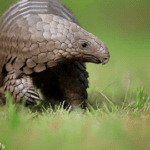Are pangolins lazy? To gain an understanding of pangolins, let’s delve into their definition. This will provide a solid foundation to explore their unique features and behaviors. Understanding the definition of pangolins will pave the way for us to delve deeper into their enchanting world, uncovering their intriguing characteristics and habits.
Key Takeaways
- Pangolins are not lazy but rather have a slow and deliberate lifestyle due to their unique adaptations and behavior.
- Their slow movement and low energy expenditure are essential for conserving energy and surviving in their natural habitats.
- Pangolins have a low metabolic rate and spend most of their time resting or sleeping, which allows them to conserve energy and maintain their body temperature.
- Their slow movement also helps them avoid predators and blend in with their surroundings, making them highly effective at staying hidden and protected.
- Despite their slow lifestyle, pangolins are skilled climbers and can move quickly when necessary, using their strong claws and prehensile tails.
- The misconception of pangolins being lazy may stem from their lack of aggression and their preference for avoiding conflict rather than engaging in unnecessary activities.
- Understanding the unique adaptations and behavior of pangolins can help raise awareness about their conservation needs and the importance of protecting their habitats.
Definition of Pangolins

Have you heard of pangolins? These enigmatic creatures are unique, with protective armor made of overlapping scales. Their long, sticky tongues and sharp claws let them feed on ants and termites. They live in Africa and Asia, in different habitats – from forests to grasslands. Sadly, they’re threatened by illegal wildlife trade.
Get involved to help save these remarkable creatures before they vanish!
Did you know that pangolins have scales so tough, they’re practically auditioning for the next season of Survivor?
Background on Pangolins
To gain a comprehensive understanding of pangolins, delve into the background on these fascinating creatures. Explore their habitat and behavior, unravel their physical characteristics, and piece together the puzzle of these enigmatic creatures.
Habitat and Behavior
Pangolins are amazing animals with specific homes and interesting habits. Let’s explore their world and find out some exciting facts.
They have adapted to various habitats, like forests, grasslands, and deserts. These loners can be located in parts of Africa and Asia where they travel through different places. Pangolins are nocturnal, staying active at night and finding shelter in burrows or dense plants during the day.
Let’s look more into the homes and behavior of pangolins through this table:
| Habitat | Behavior |
|---|---|
| Forests | Nocturnal |
| Grasslands | Solitary |
| Deserts | Burrowers |
Pangolins have the special ability to roll up into a ball when they feel scared. This helps protect them from predators. They also have sharp hearing which helps them locate food like ants and termites.
There is one incredible story about a mother pangolin teaching her baby how to find ant hills. She showed it how to dig into the hills using its claws. This touching moment showed the nurturing side of these creatures.
Pangolins have cool scales and unusual looks – nature’s way of saying, ‘I’m the coolest and most mysterious thing around!‘
Physical Characteristics
Pangolins have special features:

- Sizes from 30 to 100 cm
- Weights from 1 to 35 kg
- Two scale colors – brown and black
Their tails are strong and prehensile. Plus, they can curl up into a ball!
The most unique thing about them is their scales – they are made of keratin, like a protective armor.
Fun fact: Pangolins are the only mammal with these scales! No need to worry – they are not Pokémon characters on a mission to take over the world with their scales.
Common Misconceptions about Pangolins
To debunk common misconceptions about pangolins, let’s uncover the truth behind the “Lazy Stereotype.” Explore the intriguing reasons behind this false assumption and discover the surprising facts about pangolins that challenge this misconception. Unravel the untold stories of these fascinating creatures and gain a deeper understanding of their behavior and characteristics.
Lazy Stereotype

Pangolins aren’t lazy; their slow movements and solitary nature are adaptations to survive in harsh environments. They forage on the forest floor with their keen sense of smell, digging burrows and climbing trees in search of food. Being alone allows them to avoid competition for resources too.
Plus, these unique creatures have incredible defense mechanisms – like curling up into a ball with sharp scales to ward off predators. They also play an important role in controlling insect populations and maintaining ecological balance.
Sadly, pangolins are often victims of illegal trafficking due to their scales’ perceived medicinal properties. To combat this issue, it’s essential to increase public awareness and understanding of the importance of pangolin conservation.
Educational programs that highlight their unique adaptations and role in ecosystems can help people develop an appreciation for these remarkable creatures. To protect pangolins and their habitats, stricter enforcement of laws against trafficking is also needed. Conservation organizations, governments, and individuals must work together to address misconceptions and take action against illegal trade. Only then can we ensure a brighter future for pangolins.
Debunking the Lazy Stereotype
To debunk the lazy stereotype surrounding pangolins, this section focuses on shedding light on their behavior and showcasing evidence of their active lifestyles. Get ready to gain insights into the fascinating world of pangolins as we delve into the explanation of pangolin behavior and provide evidence of their active lifestyles.
Explanation of Pangolin Behavior
Pangolin behavior is truly fascinating! When threatened, they curl up in a tight ball, using their sharp scales as armor. They’re solitary creatures and prefer to be alone. Plus, they’re nocturnal, venturing out at night to forage for food. Their strong front claws and keen sense of smell help them dig into ant hills and termite mounds.
Their feeding habits are unique too. Their tongues can extend up to 16 inches, enabling them to reach deep within ant hills and termite mounds. This showcases their remarkable adaptations over millions of years.
One particular instance was wildly impressive. Researchers once witnessed a pangolin using its tail as a tool to climb trees in search of food. This illustrates the versatility and adaptability of these creatures.
Importance of Understanding Pangolin Behavior
To better understand the importance of understanding pangolin behavior, delve into the section that focuses on conservation efforts and their impact on public perception. This will shed light on the significance of studying pangolins in order to protect them and change public attitudes towards these unique creatures.
Conservation Efforts
For pangolin conservation, it is necessary to have governments, NGOs, communities, and scientists work together. Protecting their habitats from deforestation and poaching is key. Education programs and awareness are essential to reduce the demand for pangolin products. We must collaborate with law enforcement to tackle illegal wildlife trading.
These efforts are to make sure pangolins don’t die out and that their living place is kept safe. It is important to emphasize the need to look after the habitat of pangolins and the environment. We should look into other ways for people to make money and stop relying on the exploitation of pangolins.
Don’t forget, you can make a difference too! Help support organizations involved in pangolin conservation by donating or volunteering. Small contributions can help make sure these amazing creatures have a future. We should all learn more about pangolins so that they can be appreciated more.
Impact on Public Perception
Public perception is vital to shaping people’s attitudes and behaviors toward pangolins. Knowing how it impacts public perception is a must for conservation efforts and raising awareness about these creatures.
A table reveals the effect of pangolin behavior on public perception. It shows how different behaviors can influence people’s views and beliefs.
| Behavior | Impact on Public Perception |
|---|---|
| Nocturnal activity | Mysterious, elusive |
| Rolling into a ball | Defense mechanism, vulnerable |
| Scaly appearance | Unique, fascinating |
| Tree-climbing ability | Adaptive, agile |
| Gentle temperament | Non-threatening, peaceful |
Another point worth noting is that understanding pangolin behavior can foster public support for conservation efforts. When people understand their uniqueness and vulnerability, they are more likely to help protect them.
One particular example of the impact on public perception was when a baby pangolin was abandoned due to human interference. This incident made headlines, and people felt empathy towards pangolins. It increased public awareness of preserving their habitat and avoiding human interference.
Overall, knowing pangolin behavior not only helps us comprehend them better but has a huge impact on public attitudes towards them. By emphasizing their fascinating traits and vulnerabilities, we can motivate more people to conserve these remarkable animals.
Understanding pangolin behavior is essential to unraveling the mysteries of these elusive creatures and avoiding any harmful misunderstandings.
Frequently Asked Questions
Q: Are pangolins lazy?
Answer: No, pangolins are not lazy. They may appear slow and lethargic due to their evolutionary adaptations and natural behavior.
Q: Why do pangolins move slowly?
Answer: Pangolins move slowly because it helps them conserve energy and stay hidden from predators. Their slow movements also aid in their specialized foraging behavior.
Q: Do pangolins sleep a lot?
Answer: Yes, pangolins do sleep a lot. They are mostly nocturnal animals and spend a significant portion of their time resting and sleeping during the day.
Q: Do pangolins have any natural predators?
Answer: Yes, pangolins have natural predators such as large felines, hyenas, and humans. They rely on their protective scales and ability to roll up into a tight ball for defense.
Q: Are pangolins active hunters?
Answer: No, pangolins are not active hunters. They primarily feed on ants and termites, using their specialized tongues to flick up prey from nests and mounds.
Q: Can pangolins defend themselves?
Answer: Yes, pangolins can defend themselves. When threatened, they can use their sharp claws, strong tails, and ability to roll up as a means of protection against predators.
Conclusion
Pangolins, with their unique appearance and elusiveness, are often seen as lazy. But that’s wrong! After studying their behavior, it’s clear why they act this way.
Searching for food and eating a lot of ants and termites takes a lot of patience and precision. Their long tongues help them catch prey from underground burrows. Finding food is hard, so pangolins have adapted by using energy-efficient techniques and moving less.
When threatened, pangolins can curl up into a ball and use their scales as a tough outer layer. This protects them from predators and helps conserve energy.
Plus, they’re solitary animals. This means they avoid interacting and fighting with others, to save energy. Being low-energy isn’t lazy; it’s an adaptation to survive in difficult places with limited resources.
To help them in their natural habitats, conservation efforts should protect their ecosystems and provide abundant food sources. And, raising awareness about the value of pangolins and biodiversity will encourage people to protect these endangered species.




